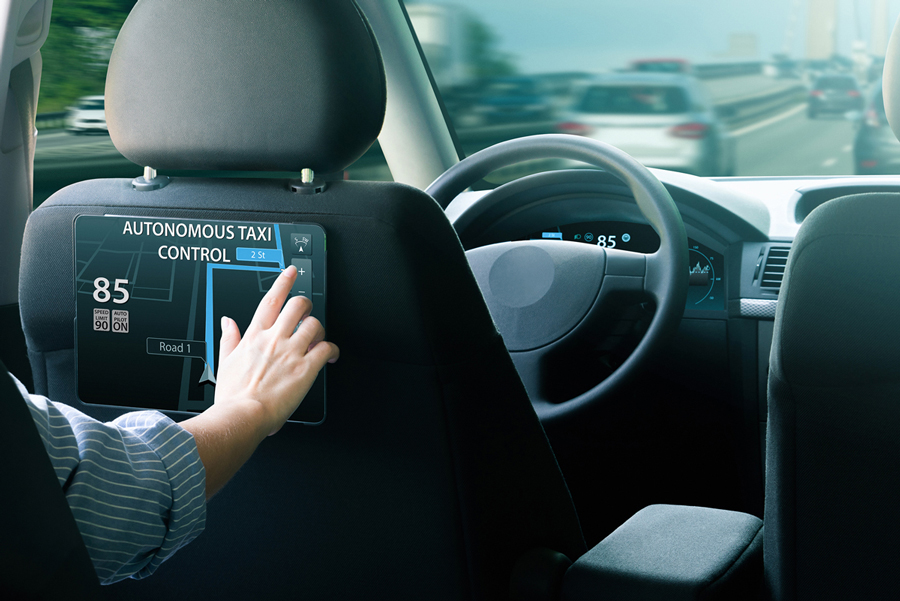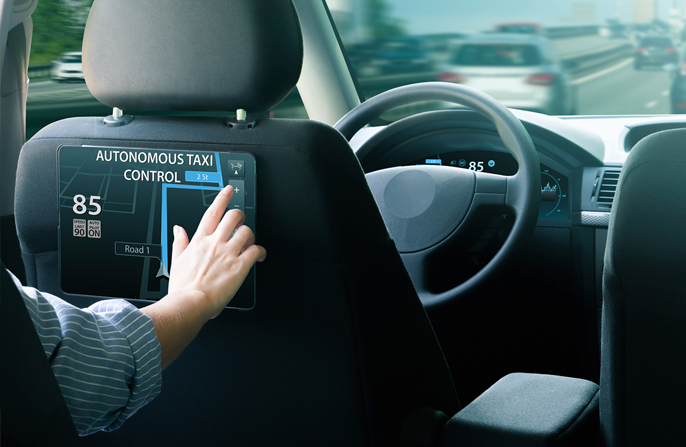BY KEN LUCCI
We all remember when Uber was considered a major disruptor to our industry, with ensuing battles across the country. While the disruption ended up being mostly detrimental to taxis, it did have impacts (both positive and negative) on chauffeured transportation, especially with the rollout of Uber Black and Uber for Business. Now, numerous companies—Waymo, backed by Google, is leading the pack—are racing toward autonomous vehicles (AVs) as the next big shift in transportation. Is this the next disruptor? Here’s what the data show.
 On July 17, Uber publicly announced a partnership with electric vehicle manufacturer Lucid and California-based self-driving technology company Nuro to deploy 20,000+ autonomous robotaxi vehicles in phases over the next six years. The vehicles will be owned and operated by Uber or its third-party fleet partners and made available to riders exclusively via the Uber platform.
On July 17, Uber publicly announced a partnership with electric vehicle manufacturer Lucid and California-based self-driving technology company Nuro to deploy 20,000+ autonomous robotaxi vehicles in phases over the next six years. The vehicles will be owned and operated by Uber or its third-party fleet partners and made available to riders exclusively via the Uber platform.
As an aside, the Nuro/Lucid premium robotaxi plan comes on the heels of an announcement two days earlier indicating that Uber and Baidu, another manufacturer of AVs, have entered into a multi-year strategic partnership to deploy thousands of Baidu’s Apollo Go AVs on the Uber platform across multiple global markets outside of the US and mainland China. The first deployments are expected in Asia and the Middle East later this year.
Uber expects to roll out the first premium Lucid/Nuro robotaxis next year in a major but yet undisclosed US city. The premium robotaxi will leverage Lucid Gravity’s advanced technology platform with long range and full autonomy capabilities enabled by Nuro Driver, their Level 4 self-driving system. Nuro Driver combines automotive-grade hardware and AI-powered software designed for reliability and scalability. The announcement by Uber also indicated that the company has committed to invest “several hundred million dollars in the two companies.”
 According to Nuro President Dave Ferguson, teams from Lucid and Nuro built a prototype robotaxi in just five weeks by integrating the Nuro Driver system into a stock Lucid Gravity SUV and then extensively road testing the now AV at the Nuro proving track in Las Vegas. A video announcing the project and showing the robotaxi in action can be seen at nuro.ai or here.
According to Nuro President Dave Ferguson, teams from Lucid and Nuro built a prototype robotaxi in just five weeks by integrating the Nuro Driver system into a stock Lucid Gravity SUV and then extensively road testing the now AV at the Nuro proving track in Las Vegas. A video announcing the project and showing the robotaxi in action can be seen at nuro.ai or here.
Once the vehicles are deemed ready for public roads, Uber aims to phase in tens of thousands of robotaxis over several years. The vehicles will be owned and operated by Uber or its third-party fleet partners and made available to riders exclusively via the Uber platform. In the project press release, Uber CEO Dara Khosrowshahi stated: “Autonomous vehicles have enormous potential to transform our cities for the better. We are thrilled to partner with Nuro and Lucid on this new robotaxi program, purpose-built just for the Uber platform, to safely bring the magic of autonomous driving to more people across the world.”
On July 17, Uber publicly announced a partnership with electric vehicle manufacturer Lucid and California-based self-driving technology company Nuro to deploy 20,000+ autonomous robotaxi vehicles in phases over the next six years.
What is also newsworthy about this partnership is the design of the autonomous package: The Nuro Driver platform is designed to integrate with any vehicle, making it the first totally vehicle agnostic system available for commercial use. According to the company website: “Nuro Driver uses a combination of AI, advanced sensors, and a modular hardware design to enable safe and reliable autonomous delivery. The system is built around an AI-first approach with a focus on mimicking natural driving behavior while maintaining Level 4 safety standards. Level 4 autonomy integrates an end-to-end AI model with safeguards for precision and reliability. This enables rapid adaptation to new environments, functions, and vehicle platforms—reducing deployment timelines.”
Level 0: Momentary Driver Assistance. Driver is fully responsible for driving the vehicle while system provides momentary driving assistance, like warnings and alerts, or emergency safety interventions.
Level 1: Driver Assistance. Driver is fully responsible for driving the vehicle while system provides continuous assistance with either acceleration/braking OR steering.
Level 2: Additional Driver Assistance. Driver is fully responsible for driving the vehicle while system provides continuous assistance with both acceleration/braking AND steering.
Level 3: Conditional Automation. System handles all aspects of driving while driver remains available to take over driving if system can no longer operate.
Level 4: High Automation. When engaged, system is fully responsible for driving tasks within limited service areas. A human driver is not needed to operate the vehicle.
Level 5: Full Automation. When engaged, system is fully responsible for driving tasks under all conditions and on all roadways. A human driver is not needed to operate the vehicle.
Source: NHTSA
While the total price tag of a Nuro Driver-equipped Lucid robotaxi has not been disclosed, according to published reports, Nuro claims its system has been designed to be cost-efficient compared to other self-driving systems currently on the market. In that same 2024 article, a Nuro representative stated that their system would be “an order of magnitude less” than the $150K or more that other self-driving systems can cost. We do know that a stock Lucid Gravity premium luxury all electric SUV has a sticker price of between $79,900 and $96,950 depending on the trim and interior package chosen, according to lucidmotors.com. Gravity has an EPA estimated range of up to 450 miles on a single charge. Compare this to Waymo’s current ride-hailing fleet, which consists of fully electric Jaguar I-PACE vehicles with an EPA estimated range of up to 246 miles and a sticker price when new starting at $73,275, according to kbb.com.
Our initial supposition based on MSRP of the Lucid Gravity and the cost range of the Nuro Driver autonomous package quoted in the published report is the Uber/Lucid/Nuro robotaxi will cost $130K-$160K per vehicle at initial deployment. Grand total, this innovation could be an investment of between $2.6B to $3.2B by the ridehsare giant, not including the “several hundred million dollars” Uber has reportedly committed to invest in the two companies.
Goldman Sachs Research indicated in a recent update that the robotaxi rideshare market could grow at a 90% compounded annual growth rate from 2025 through 2030. At that level, AVs would generate $7B in annual revenue and capture roughly 8% of the US rideshare market, up from less than 1% at present. Goldman analysts also indicated that the “gross margins for a vertically integrated autonomous vehicle operator could reach 40% to 50% over the next three to five years.”
Finally, what about public sentiment? After all, Waymo has impressed even the most skeptical operators in the industry when they’ve had a chance to take them. According to a YouGov poll from January 2025: “While many Americans think driverless cars will someday become widespread, few people currently have experience riding in one. Just 3% say they have been a passenger in a driverless car, though 37% say they would definitely or probably be interested in riding in one. More (52%) say they definitely or probably would not be willing to try one. Adults under 45 are more likely to be open to the possibility than those 45 and older (58% vs. 25% have ridden in one or would be willing to try). Men (49%) are more willing to try a driverless car than women (31%). Interest is also higher among city residents (50%) compared to suburban (35%) and rural residents (27%).” Full poll available at today.yougov.com or here. [CD0825]
Ken Lucci is the principal business analyst and founder of DrivingTransactions.com. He can be reached at




